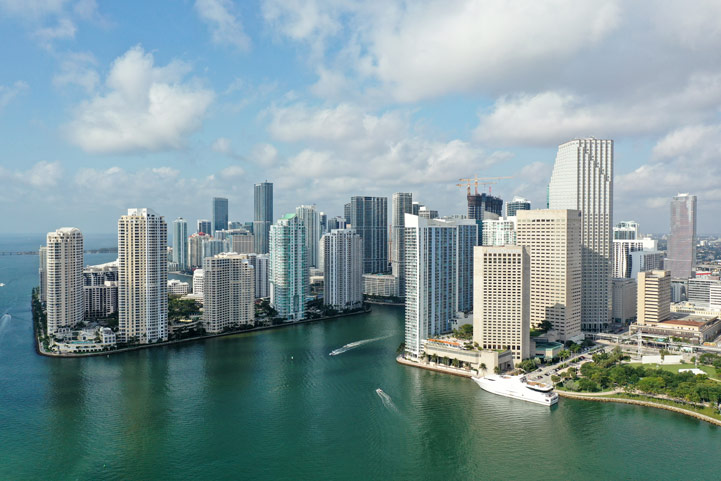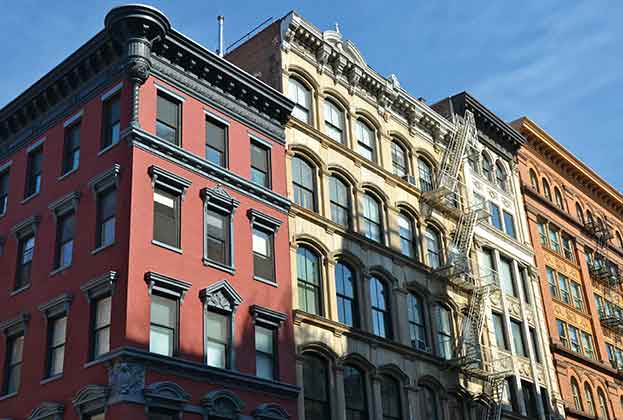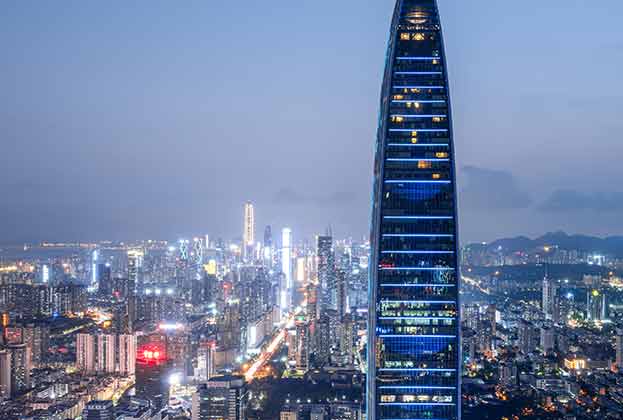Positive capital value growth continued throughout 2022, with average increases of 3.2% across the 30 cities in the index. However, rising interest rates and negative sentiment took a hold in the second half of the year
Miami, Dubai and Singapore lead growth
Miami, Dubai and Singapore led global capital value growth in 2022. While lower than the highs of 2021, growth has been fuelled by pent-up demand from both international and domestic buyers, a lack of quality stock and the inflow of high-net-worth individuals, companies and family offices. New York also saw the second highest number of $5m transactions since 2017.
Oxford Economics has forecast that by 2030 the number of households with an annual income exceeding $250,000 will grow by more than 15% in each of these cities. In Dubai, the number of these households is also forecast to double, to just under 50,000 households, in the next seven years.
Milan, Lisbon and Cape Town outperform
Milan (+5.7% in 2022) is the top-performing city in Italy and the second fastest-rising prime residential market among the European cities we monitor. Demand has remained robust while a number of new developments have improved the quality of the prime stock in the city.
Lisbon, ranking top in the Savills Executive Nomads Index, saw average annual prime property values grow by 5.6% in 2022. Although the country’s popular residency-by-investment scheme is under review for popular urban areas of the country and much of the Algarve, the city of Lisbon expects to continue to see an ongoing diversification from domestic to international demand in the near to medium term.
In 2022 prices grew by 5.1% in Cape Town, South Africa’s largest metro area. The city’s population is forecast to grow a further 11% by 2030, supporting growth in its prime residential market, although prices are yet to recover to their pre-pandemic price level.

Global city: Miami
Asian cities
Seoul and Tokyo were the two strongest performing cities in the Asia Pacific region last year, with prime prices rising 4.9% and 4.1% respectively. Despite the impact of the deteriorating economic situation on national housing markets, the prime sector has shown resilience. Prices maintaining positive growth due to an accumulation of factors including rising build and labour costs, scarcity of land and the ‘wait and see’ attitude of purchasers.
With annual growth ranging from +3% to -2%, the picture is mixed across major Chinese cities. The easing of Covid-19 restrictions towards the latter half of the year saw improved performance in the second half of 2022 in Hangzhou (1.8%) and Shanghai (2.0%). However, nationally low prime property volumes, the indebted real estate sector, weak consumer confidence and slower economic growth have all put downward pressure on price growth compared to previous years.
In Hong Kong, pandemic restrictions and rising interest rates weakened sentiment in the already slowing luxury residential market. This suppressed transaction volumes causing pricing declines across all price brackets except the ultra-prime residences. Average prime prices fell by -8.5% in 2022.
Shenzhen, San Francisco and Sydney
Shenzhen (-1.6% in 2022) and San Francisco (-5.2% in 2022), two cities largely dependent upon their technological sectors, have particularly felt the impact of economic headwinds that unfolded in the latter part of 2022. Changing workforces and working patterns in the tech sector has been a factor causing falls in these cities.
Sydney’s prime market recovered strongly in 2021 as the country opened up in the wake of the pandemic, with prime prices rising by 8% and reaching new records by December 2021. That changed in 2022 as the Reserve Bank of Australia increased interest rates. Properties, according to Savills experts, are now more likely to continue to trade close to or at asking price in 2023.
Read the other articles within Savills Prime Residential Index: World Cities below
.jpg)




